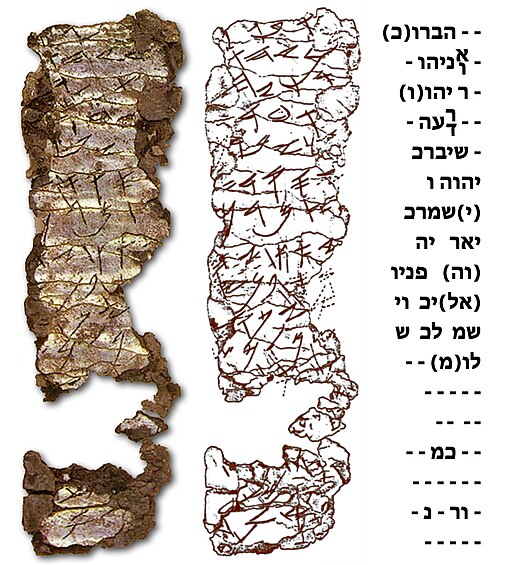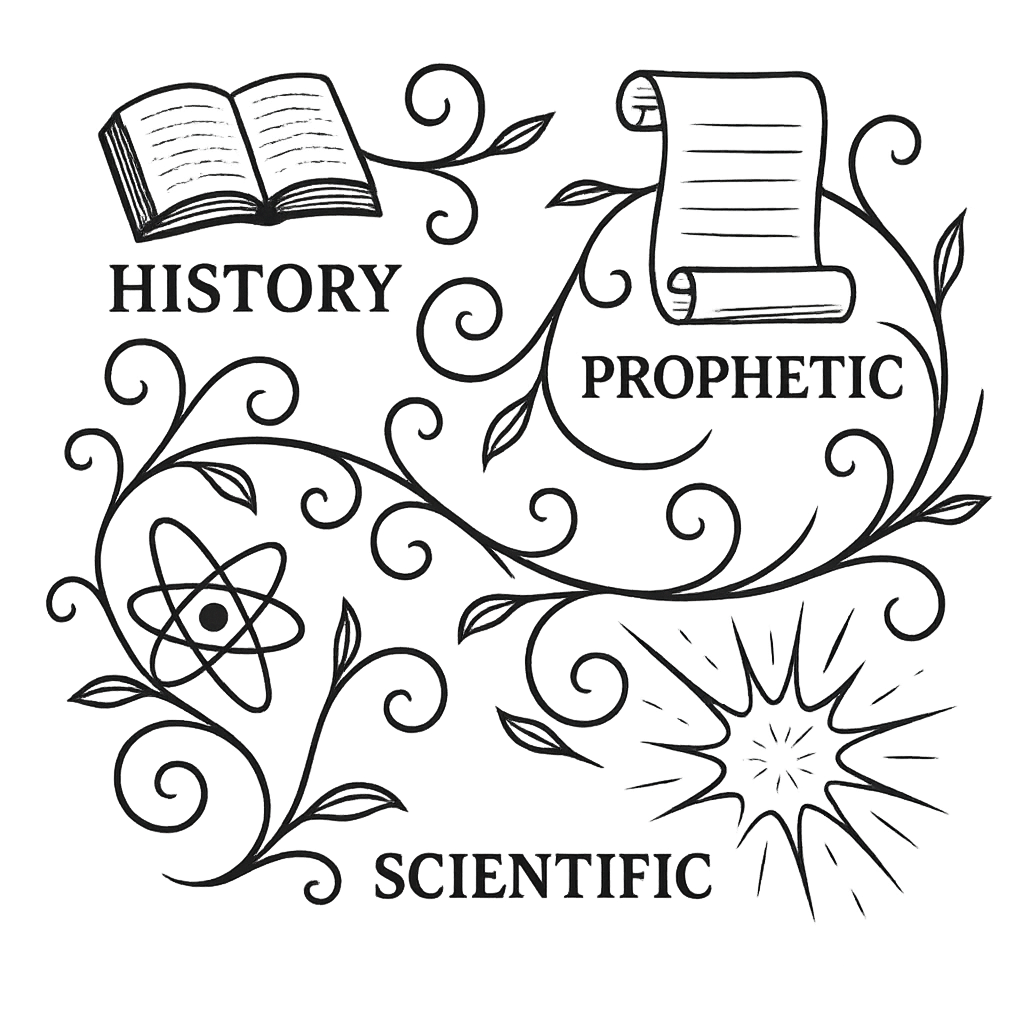
One of the most remarkable archaeological discoveries is the Ketef Hinnom silver scrolls. These tiny scrolls, dating to the 7th century BCE, contain the Priestly Blessing from Numbers 6:24–26, making them the oldest surviving texts directly quoting the Hebrew Bible. Their discovery shows that Israelite religious practices and sacred texts were already established centuries before other manuscripts such as the famous Dead Sea Scrolls.
📜 Discovery and Context
The silver scrolls were uncovered at Ketef Hinnom, a burial site near Jerusalem, during excavations in 1979. The amulets are very small — roughly 2–2.5 centimeters long — and were rolled tightly for burial with the dead. Each scroll is inscribed with a blessing:
“The Lord bless you and keep you; the Lord make His face shine upon you and be gracious to you; the Lord lift up His countenance upon you and give you peace.” (Numbers 6:24–26)
While the most promiment text is the Priestly Blessing in Numbers 6:24-26, one of the two scrolls (KH1) also contains an inscription with very close parallels to other biblical passages. The specific text on this scroll reads:
“The Lord … who keeps the covenant and the kindness toward those who love him and keep his commandments.”
Note that the ellipses (…) in this text indicate that portions of the original inscription are missing or unreadable due to the scrolls’ fragile condition.
This phrase has strong parallels to verses from other parts of the Hebrew Bible:
- Deuteronomy 7:9: “Know therefore that the Lord your God is God, the faithful God who maintains covenant loyalty with those who love him and keep his commandments, to a thousand generations.”
- Nehemiah 1:5: “I said, ‘O Lord God of heaven, the great and awesome God who keeps covenant loyalty with those who love him and keep his commandments…’”
- Daniel 9:4: “I prayed to the Lord my God and made confession, saying, ‘Ah, Lord, great and awesome God, who keeps covenant loyalty with those who love him and keep his commandments…’”
Even in miniature form, the Silver Scroll inscriptions provide clear evidence that key biblical texts were written, circulated, and used ritually by Israelite communities centuries before other manuscript discoveries.
⚖️ Dating, Debate, and Historical Significance
Scholars universally date the scrolls to the late 7th century BCE, making them over 600 years older than the earliest Dead Sea Scrolls. This early dating was initially met with some skepticism by a few scholars who questioned the legibility of the tiny inscriptions. However, subsequent analyses, including high-resolution imaging and paleographic studies, have confirmed the scrolls’ authenticity and dating. This high-resolution analysis largely settled the initial scholarly debate.
Moreover, this confirmed dating is profoundly significant because it delivers a direct and powerful challenge to a key tenet of the Documentary Hypothesis, a prominent theory among biblical critics. This theory, in its classic form, posits that a major portion of the Pentateuch, known as the Priestly (P) source, was a much later composition, created during the post-exilic period (5th century BCE).
The discovery of a text from the Priestly (P) source on a scroll dated to the 7th century BCE provides undeniable archaeological proof that this biblical material existed and was in use centuries before its supposed date of origin. This finding directly undermines a foundational argument of the theory, forcing a major reassessment of the timeline for the composition of the Pentateuch. The scrolls thus serve as a powerful historical witness to the pre-exilic origins of key biblical texts and the remarkable stability of their textual tradition.
📚 Textual Similarities and Variants
When comparing the Silver Scrolls to later manuscripts, including the Dead Sea Scrolls and the Masoretic Text, they show strong consistency in the wording of the Priestly Blessing. Minor orthographic differences exist — for example, certain letter forms or spacing — but the meaning remains identical. These are considered insignificant variants because they do not change the core message or theological content of the text. This remarkable stability indicates that textual transmission over centuries preserved the essential wording, supporting the reliability of the Hebrew Bible long before it was codified in later manuscripts.
💡 Why This Matters for Biblical Reliability
The Silver Scrolls provide several important historical insights:
- Early Circulation: Key texts like the Priestly Blessing were already in written form and used in daily religious practice centuries before the common era.
- Textual Continuity: The scrolls show remarkable similarity to later copies, demonstrating a stable textual tradition across a millennium.
- Liturgical Use: These amulets were likely worn or placed with the dead, showing that sacred texts were actively integrated into worship and daily life, not just for a collective, but for individuals as well.
- Historical Witness: The scrolls confirm that portions of the Hebrew Bible were not later inventions but had an established presence in Israelite society as early as the 7th century BCE.
📖 Conclusion: A Window into Ancient Scripture
Though small, the Ketef Hinnom scrolls are a monumental discovery. They confirm that sacred texts were written, circulated, and revered by Israelite communities more than six centuries before the Dead Sea Scrolls, providing the earliest tangible evidence of biblical writings in use. The remarkable consistency with later manuscripts underscores the reliability and longevity of the Hebrew Bible, demonstrating a long history of faithful transmission.
📚 References
Academic & Historical Sources
- Armstrong Institute. “The Ketef Hinnom Scrolls: Earliest Biblical Text Ever Discovered.”
- McCarter, P. Kyle. Letters from the Priests: Epigraphic Studies of the Ketef Hinnom Scrolls. Journal of Biblical Literature, 1980.
- Barkay, Gabriel. “Ketef Hinnom Amulets: Early Evidence of the Priestly Blessing.” Bulletin of the Israel Exploration Society, 1980.
- Tyndale House. “The Ketef Hinnom Amulets.”
Image Credits
- Birkat Kohanim (Priestly Blessing). Wikimedia Commons. Available here. Public Domain / Free Cultural Work

Leave a Reply